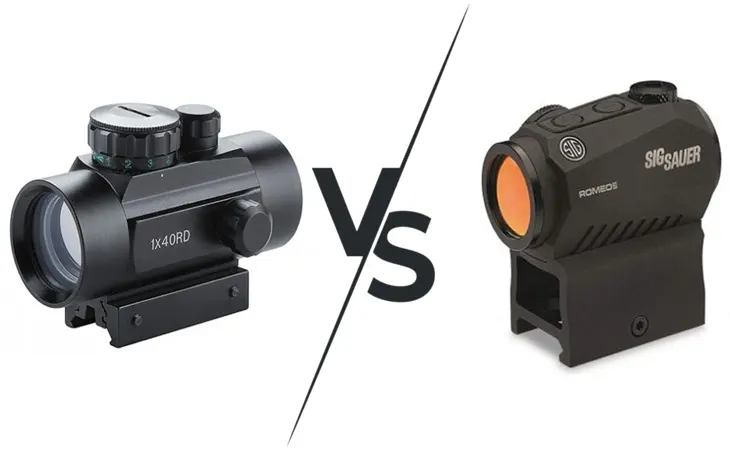Reflex Sights VS Red Dot Sights; What Are The Differences?
Today we are going to discuss "what are the difference between reflex sights vs red dot sights vs holographic sights?" History, types, features, advantages and disadvantages; we explained all in here. So why are you waiting for? Let's jump to read the pieces of information.
Optic sights such as reflex sights and red dot sights help shooters improve their firing techniques and make target acquisition a lot easier.
At present, the usage of optic sights particularly red dot sights is gaining popularity for its potential in the law enforcement community. As a matter of fact, the National Law Enforcement Firearms Instructors Association (NLEFIA) conducted a national survey regarding officer-involved shootings (OIS) with pistol-mounted red dot sights in 2019.
Results show that 81.8% of the users of the pistols mounted with red dot sights had no difficulty or delay in seeing the red dot and the same percentage was satisfied with the pistol's performance.
With red dot sights becoming more popular and used, it is just necessary that gun enthusiasts know more about them. By the end of this article, you'll know more about reflex sights vs red dot sights and which one is better.
What is a reflex sight?
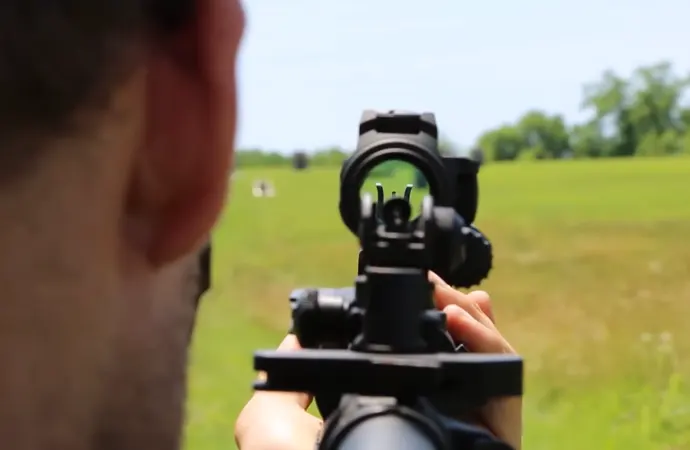
History
The reflex sight was an invention by Howard Grubb, a telescope manufacturer, in 1900. It was reported that the reflex sight could be an alternative for iron sight and can also be used in surveying. In 1918, it was first used in a German fighter aircraft.
During World War II in 1945, the reflex sight was installed and used in different tank weapons, naval guns, artilleries, and more. While it was able to provide much optical assistance, it lacked lighting elements so more light sources were necessary for accurate aiming.
Also READ: Top 13 Best Reflex Sights (Complete Buying Guide)
Types of reflex sight
A. Open Type
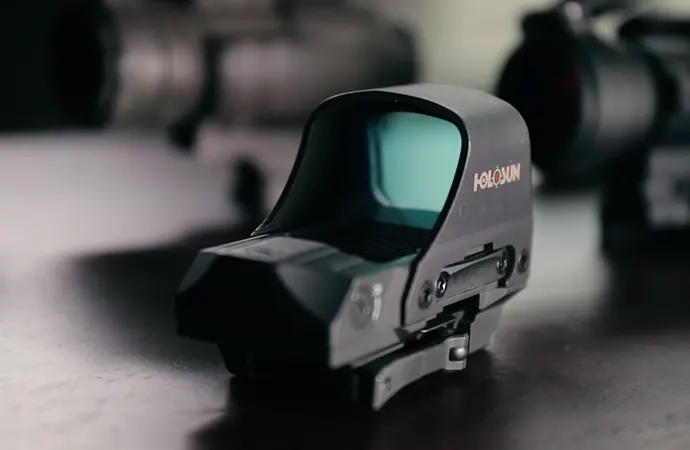
The open type of reflex sights is vulnerable to outside factors. The housing, where the light source is found, is partly open. Because it is open, different environmental or outside factors like dirt, rain, snow, and others can affect the light source. They can cause fog and lessen the quality of the display. There is also no eye relief for this type of reflex sight.
On a lighter note, this reflex sight type allows you to lock in your target more quickly.
B. Tube Type

The tube type of reflex sight has a closed housing and is not affected by outside factors. It can be used in any kind of weather and place It. has two lenses. The light is sent from the rear lens while the front lens reflects it.
It doesn't feature eye relief but it is quick to acquire targets. However, the target acquiring speed is lesser than the open type.
FEATURES
A reflex sight is a type of red dot sight. Below, we talk more about the features of the reflex sights in more detail.
- Reflex sights use a battery to supply power to a single LED.
- The LED sends out green or red light towards the concave lens.
- The concave lens has an illuminated coating so the red or green point of light can be seen with the naked eye.
- The target or focus of the lens will appear floating on the viewer.
Basically, all reflex sights are red dot sights. However, not all red dot sights are reflex sights. This is because there are more types of red dot sights. We will cover other types of red dot sights later.
Advantages:
- Battery-powered LED
- Low-cost or cheaper compared to other optical sights
- Quick and easy to acquire a target
- Small and handy depending on the model
- Both eyes can be open for quick sighting and clear image
Disadvantages:
- Reflex sights are not magnified so they can't be used in distant aiming
- Can only be used in aiming targets at short or medium range
- The brightness of the red or green light dot may not be visible at night
- Can fog up when the temperature is cold or due to condensed breath
- Open type of reflex sights can have a moisture buildup
- Sunlight may be reflected in the front lens causing distraction
What is red dot sight?
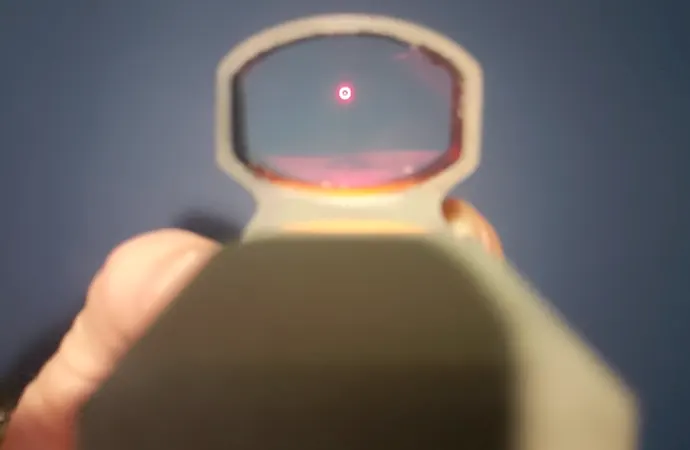
History
Red dot sights came to life in 1975. The Swedish optics company Aimpoint AB introduced the first "electronic" red dot sight. It had a closed tube design and features a combination of a reflecting curved mirror and a light=emitting diode. The first red dot structure was designed by John Arne Ingemund Ekstrand, a Helsinburg engineer,
Originally, red dot sight was called the "Aimpoint" electronics. It could be mounted in a similar way as a telescopic sight. The LED used in this optic sight can last for up to 3000 hours.
More manufacturers started producing this device and discovered lower power consumption. This allows the red dot sight to run for more years without turning off.
Types of a red dot sight
A. Prism Sights

Prism sights have a standard tube-style design that appears like a compact version of rifle scopes. From its name, it uses prisms instead of lenses to produce an image and acquire a target. Prisms are also the reason why prism sights are small.
Because they are small, they only have lower levels of magnification. It also has a small eye relief. It is great for shooting at moderate distances and farther. However, they are not that great to use for short ranges. This is because they can get pretty slow in acquiring the target.
B. Holographic Sights
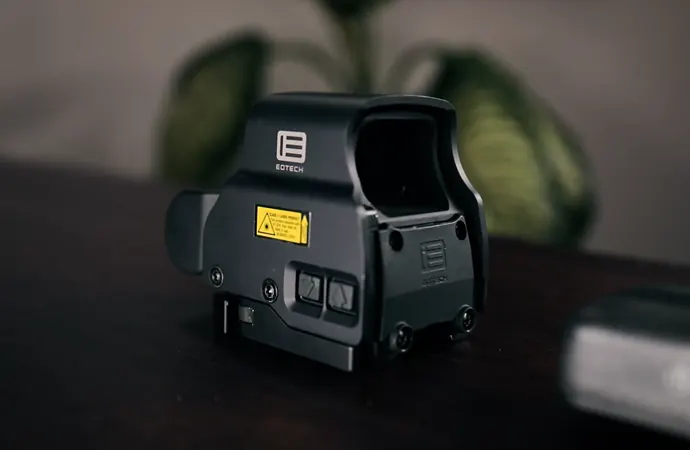
Holographic sights use laser and mirrors for red dot aiming. It has a fast target acquisition. The reticule in this optic sight remains focused while looking around the field. This makes shooting more precise and faster to acquire a target. You can also aim with both eyes open.
Furthermore, they can function even if their front lens is damaged. Other types of red dot sights like prism sight don't work when the front lens is damaged.
Holographic sights are expensive. Only two companies make them which makes their prices higher.
Features of a red dot sight
A red dot sight is an optic sight that can be used for both long and short weapons. It has two levels, the luminous dot, and target. These two levels lie on the same optical axis.
Below we discuss the different features of red dot sight.
- The red dot sight doesn't project a visible-light beam
- They do not often work with magnification
- Red dot sights are parallax free
- Optimized for dynamic targeting
- Allows sighting with both eyes open
- They are suitable for shooting at close to medium ranges of 100 to 150 meters
Advantages:
- Red dots sights can come in many kinds and models
- More technologically advanced
- The illuminated images provide aiming points electronically
- Fast target acquisition
- Improves accuracy
- Compatible with iron sights
- Compact and easy-to-transport
Disadvantages:
- Small eye reliefs depending on the model
- Can be very expensive
Also READ: Can You Wear a Mask and Carry a Gun In All States Of United States?
Reflex sights vs Red Dot sights; Which is better?
As we have tackled above, reflex sight is a type of red dot sight. Hence, purchasing a reflex sight is almost the same as buying a red dot sight,
Nevertheless, reflex sight and red dot sight still have distinct features from each other that you should consider before purchasing. If you are looking for a budget-friendly optic sight for close proximity, then a reflex sight is for you. If you are looking for an accurate target acquisition that can be used for a long time, then a red dot sight is a better bet.
Both optic sights work well and can fulfill similar purposes. Any red dot sight is likely to improve the way you shoot in one way or another. It all depends on your preference.
